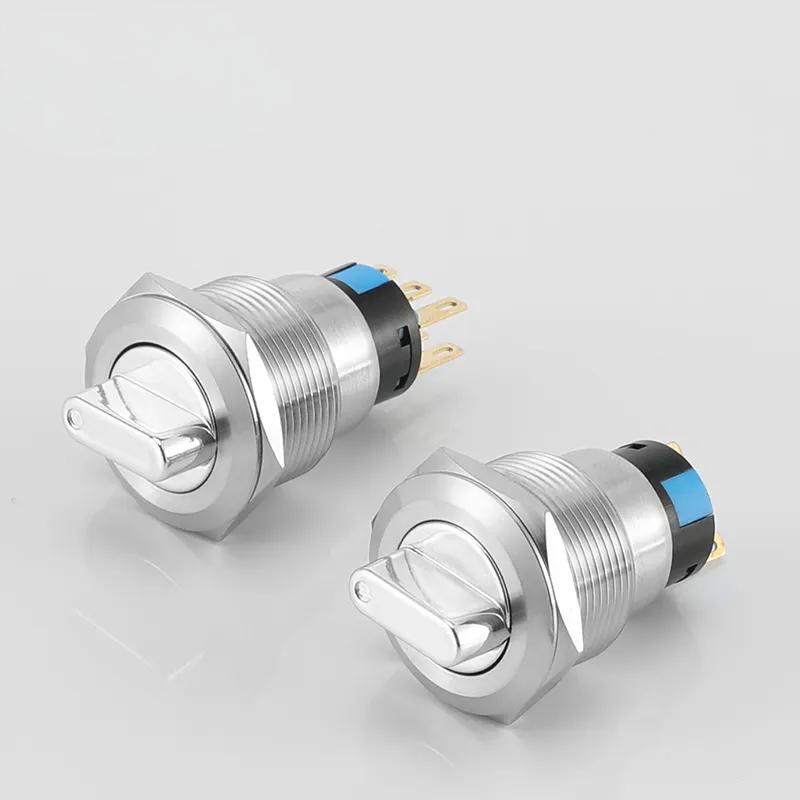Introduction to Rotary Switches
Rotary switches are versatile components used in a wide range of applications, from consumer electronics to industrial machinery. Unlike toggle or push-button switches, which have only two states (on/off), rotary switches offer multiple positions that can be selected by rotating a knob. This feature makes them ideal for controlling complex systems that require more than just binary input.
How Rotary Switches Work
A rotary switch operates on the principle of mechanical rotation. Inside the switch, there is a rotor that turns with the external knob, and this rotor has electrical contacts that connect to various stationary contacts arranged around it. As the rotor moves, it connects different sets of these stationary contacts, thereby changing the circuit configuration. The number of positions a rotary switch can have depends on its design, ranging from a few positions up to dozens.
Components of a Rotary Switch
- Rotor: The moving part inside the switch that rotates as the knob is turned.
- Stator Contacts: Stationary contacts that the rotor connects to or disconnects from during rotation.
- Shaft and Knob: The external components that allow the user to rotate the switch.
- Stop Mechanism: Limits the rotation to predefined positions.
- Detent Mechanism: Provides tactile feedback, ensuring the user feels each position change.
Types of Rotary Switches
There are several types of rotary switches, each designed for specific applications:
- Single Pole Multi Throw (SPMT): Allows switching between multiple circuits using one common terminal.
- Multi Pole Multi Throw (MPMT): Enables control over multiple circuits simultaneously.
- Stepped Attenuators: Used in audio equipment to adjust signal levels precisely.
- Decade Counters: Common in electronic test equipment for setting precise values.
- Code Wheels: Provide binary-coded output for digital systems.
Applications of Rotary Switches
Rotary switches find use across many industries due to their ability to handle multiple positions and provide precise control:
- Automotive Industry: For dashboard controls, including wipers, lights, and climate settings.
- Aviation: In aircraft cockpits for controlling various systems like communication channels or navigation aids.
- Consumer Electronics: Found in radios, mixers, and other devices where channel selection or volume adjustment is necessary.
- Industrial Controls: Ideal for machinery that requires sequential operations or multi-step processes.
- Telecommunications: Used in older telephone exchanges and modern communication systems.
Advantages and Disadvantages
Advantages
- Multiple Positions: Offers more flexibility compared to simple on/off switches.
- Durability: Built to withstand frequent operation without significant wear.
- User-Friendly: Easy to operate with clear, tactile feedback.
- Customizable: Can be configured for specific needs with various pole and throw combinations.
Disadvantages
- Size: Generally larger than simpler switches, which can limit installation options.
- Complexity: More intricate internal mechanisms may lead to higher costs and potential repair challenges.
- Limited Electrical Ratings: Depending on the model, they might not support very high voltages or currents.
Conclusion
Rotary switches play a crucial role in many technological applications, offering a reliable and intuitive method for controlling complex systems. Whether you’re designing a new piece of equipment or repairing an existing one, understanding how rotary switches work and the various types available can help you make informed decisions about their use. With advancements in technology, rotary switches continue to evolve, providing solutions for increasingly sophisticated requirements in both commercial and industrial sectors.

